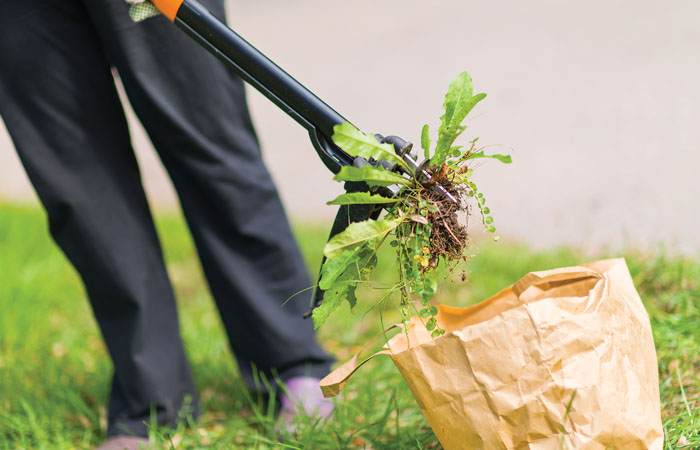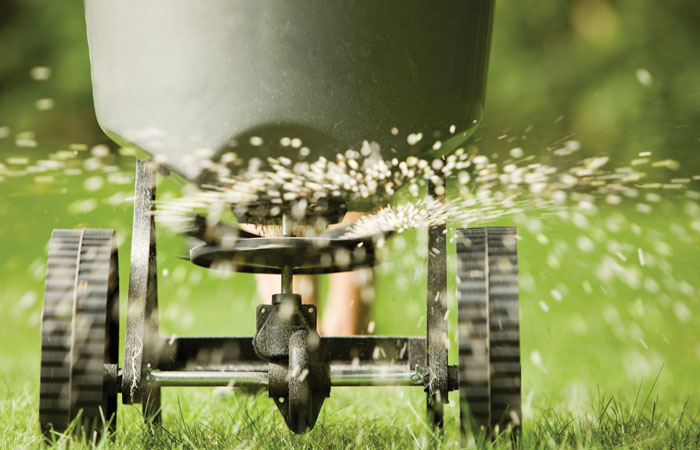Every golfer knows that weather is a factor in all aspects of golf, especially golf course maintenance. North Texas golfers also know that the local weather is famous for its unpredictability and, so far, 2021 has set a few records for weather extremes. Which brings us to this month’s Ask the Superintendent question: how do weather extremes like cold and snow impact turf and landscapes?
As a general rule, turf and landscape plants are resilient. They can handle moderate extremes in moisture and temperature, but everything has a limit. On February 14, 2021, Texas experienced a record winter storm; in Dallas, we had 5” of snow and a low temperature of minus-2 degrees with a wind chill of minus-18 degrees. Three days later, we had a severe thunderstorm with lots of lightning and 3” of rain. Then, on February 21, we saw a high temperature of 80 degrees. That is a lot to ask any plant to adjust to in one week’s time and, in many cases, plant material was killed or severely damaged. As we answer this month’s question, we are going to cover the basics of weather’s impact on turf and landscape plants with some tips to help you manage your green assets.
Turf and Cold/Winter Damage Facts
Turf cold/winter damage happens during severe or extended cold periods, usually greater than 24 hours and has historically happened in no apparent pattern in North Texas for years. The years 1983, 1989 and 2010 are often remembered for winter storms in Dallas and, while some years are worse than others, every year has the potential to be severe.
Some turf grasses love the cold weather. Cool season grasses (Bentgrass, Fescue, Ryegrass) perform well during these winter storms as they are C3 grasses: they use a three Carbon compound in photosynthesis and are well-adapted to handle cold-related stresses. Conversely, these grasses struggle in heat/drought situations. The warm season grasses (Bermuda, ST. Augustine, Zoysia) are C4 grasses and they use a four Carbon compound in photosynthesis. These grasses love the heat and struggle with colder temperatures. Even though warm season grasses go dormant in the winter, they are still vulnerable to severe cold/winter damage. Any additional stress, such as shade, traffic, poor drainage and pests, can worsen the effects of cold damage. Nematodes are an example of a pest that can severely weaken turf; they are microscopic worms that attack turf/plant roots and can weaken turf and increase winter damage.

Turf health allows the best chance of survival, but it is not a guarantee. The duration and level of cold exposure are causal factors. The lower the temperature, the less time required to damage even the healthiest turf, whether it’s a putting green or a residential lawn.
The February winter storm had turf experts icing, applying covers and mulch layers across Texas to protect warm season grasses, especially greens long before the snow fell. The lower the height of cut, the more susceptible a turf community is to cold damage, so warm season putting greens are in serious danger from cold exposure. The snow cover actually helped protect grass in some areas. The winter storm in 1989 had no snow, just bitter-cold temperatures, so snow can be helpful.
The angle of the sun in winter is lower on the horizon and creates shade/shadows on north-facing slopes, even small berms that face north are more likely to have damage. This storm also had a strong north wind that blew snow into drifts and exposed these areas to lower temperatures for longer duration, and this is the formula for turf loss. A lot of warm season grass was killed or damaged across Texas.
While patience is a virtue and it takes time to recover if your turf has not fully recovered by now, it is unlikely it will. Remember, summer is here, and more and different stresses are now testing your turf. Sod prices are up, and availability has been limited as many people have been replacing winter-damaged turf and sod farms are not immune to damage either.
There are three things that can help any turf survive winter storms or stresses of all kinds, for that matter: 1) maintain adequate fertility year-round; 2) water as needed even when the grass is dormant to maintain even soil moisture to prevent desiccation (dehydration), as often in winter it is the combination of wind and cold that kills turf/plants; 3) consider raising your height of cut before your turf goes into dormancy to help protect the turf crowns from cold exposure.
Trees and Landscape Plants’ Hardiness
Trees and landscape plants are also adapted to certain climates, but the biggest limiting factor is cold tolerance. We are located in the transition zone or, to be exact, USDA Plant Hardiness Zone 8a, which means the average minimum winter temperature is 10 – 15 degrees (Zone 8b is 15 – 20 degrees).
Many gardeners pride themselves in moving a plant slightly above or below its hardiness zone. The February winter storm collected all those trees and landscape plants that were growing a little too far north and sent them to be composted. Palm trees, pittosporum, creeping fig, loropetalum, Indian hawthorn and even live oaks were killed or damaged across Texas. I have never seen a leaf drop like the live oaks dropped in February. Some plants/trees survived, while others have slowly started to recover. Those plants/trees that have compromised vascular and root systems may not make it through the summer, as heat and drought stresses may finish the job started by the winter storm. I would say that, as an ISA Certified Arborist, it will likely be two or three years before we see the full impact of the winter storm.

You may also notice trees that have compartmentalized damaged areas so that only one side or several branches are alive and growing. Be mindful that not only are these trees aesthetically poor, but without a full canopy foliage they will react much differently in the Texas wind and could be a safety threat. A tree canopy moves uniquely to withstand wind gusts and, with all of the weight on one side the tree, could fail in heavy wind. Call an arborist if you have concerns but be patient; Texas arborists are busier than ever.
When it comes to dealing with winter-damaged landscape plants, there are several options. You may be able to prune a few plant species such as ligustrum or Red Tip Photinia selectively or back to the ground and eventually grow a decently shaped shrub. However, many shrubs will need replacement. Be aware that plant prices are up and availabilities are down; it’s simply supply and demand. I would recommend using varieties that survived this last winter storm well, such as dwarf yaupon and nandina. Avid gardeners will certainly test Mother Nature again and most years they will be rewarded. However, 2021 is an exception. Be sure to address fertility, drainage and irrigation while you’re upgrading your landscape. The green/golf industry and the homeowner will persevere.
On a brighter note, summer officially begins on June 20, 2021, and it is the best day of the year for avid golfers because it is the longest daylight day of the year (summer solstice). So you can play more golf than any other day of the year. Until next month, play lots of golf, read AVIDGOLFER magazine and be sure to thank your superintendent.
Anthony L. Williams, CGCS, CGM is the Director of Golf and Landscape Operations at the TPC Four Seasons Golf and Sports Club Dallas at Las Colinas, he is an award-winning environmental author with a degree in horticulture. Anthony can be reached at anthony.williams@fourseasons.com.